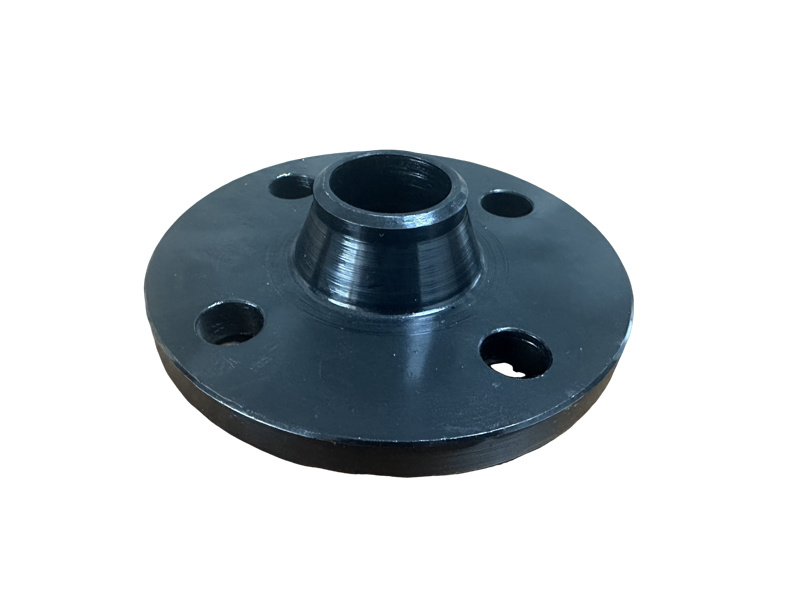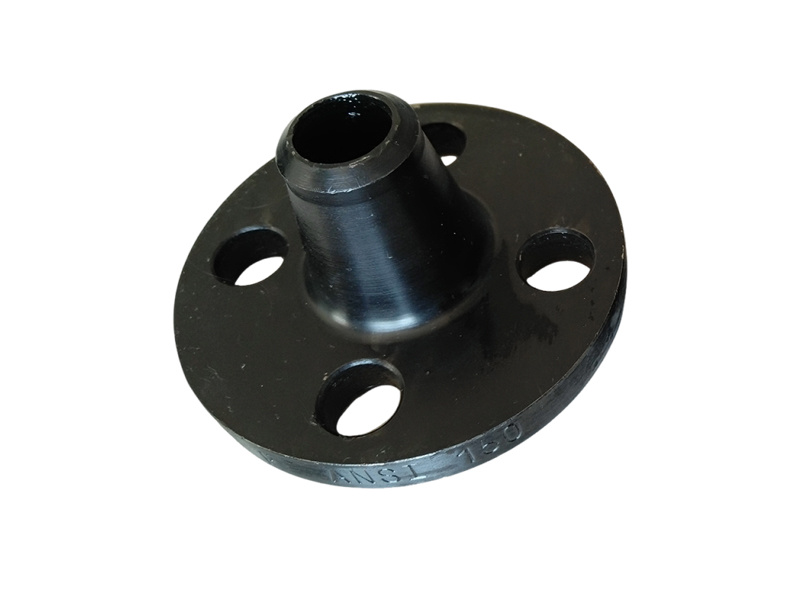-
The Impact of Concentric Reducer Fittings on Water Flow Dynamics: A Comprehensive Guide
Date:
02 Jul,2025
The Impact of Concentric Reducer Fittings on Water Flow Dynamics Table of Contents 1. Introduction to Concentric Reducer Fittings 2. Understanding Water Flow Dynamics 2.1 The Fundamentals of Fluid Mechanics 2.2 The Role of Pipe Diameter in Flow Rate 3. Overview of Concentric Reducer Fittings 3.1 Design and Structure 3.2 Material Composition 4. Functionality of Concentric Reducer
The Impact of Concentric Reducer Fittings on Water Flow Dynamics
Table of Contents
1. Introduction to Concentric Reducer Fittings
2. Understanding Water Flow Dynamics
2.1 The Fundamentals of Fluid Mechanics
2.2 The Role of Pipe Diameter in Flow Rate
3. Overview of Concentric Reducer Fittings
3.1 Design and Structure
3.2 Material Composition
4. Functionality of Concentric Reducer Fittings
4.1 Transition in Pipe Diameter
4.2 Impact on Flow Characteristics
5. Benefits of Using Concentric Reducer Fittings
5.1 Enhanced Flow Efficiency
5.2 Reduced Pressure Drop
6. Applications of Concentric Reducer Fittings
6.1 Plumbing Systems
6.2 Industrial Applications
7. Installation Best Practices
7.1 Guidelines for Proper Installation
7.2 Common Mistakes to Avoid
8. FAQs About Concentric Reducer Fittings
9. Conclusion
1. Introduction to Concentric Reducer Fittings
Concentric reducer fittings are vital components in piping systems, designed to facilitate the transition between different pipe diameters. Their primary function is to connect pipes of varying sizes while maintaining a smooth flow of fluids. In the context of water flow dynamics, understanding the impact of these fittings is crucial for achieving optimal performance and efficiency in plumbing and industrial applications.
2. Understanding Water Flow Dynamics
Water flow dynamics is a fundamental aspect of hydraulic engineering and fluid mechanics. The behavior of water as it moves through pipes is influenced by various factors, including pipe diameter, pressure, and the characteristics of the fluid itself.
2.1 The Fundamentals of Fluid Mechanics
Fluid mechanics is the study of fluids (liquids and gases) in motion and at rest. Two key concepts in fluid mechanics that relate to water flow in pipes are **laminar flow** and **turbulent flow**. Laminar flow is characterized by smooth, parallel layers of fluid, while turbulent flow involves chaotic, irregular movements. The type of flow that occurs in a pipe is significantly influenced by its diameter and the presence of fittings like concentric reducers.
2.2 The Role of Pipe Diameter in Flow Rate
The diameter of a pipe plays a pivotal role in determining the flow rate of water. According to the **continuity equation**, an increase in the velocity of a fluid correlates with a decrease in pressure, particularly when the diameter of the pipe decreases. This relationship underscores the importance of using appropriate fittings to manage flow dynamics effectively.
3. Overview of Concentric Reducer Fittings
Concentric reducer fittings are designed to connect pipes of differing diameters in a manner that ensures a continuous flow of fluid. These fittings are engineered for both functionality and durability, making them essential components in various hydraulic systems.
3.1 Design and Structure
The design of concentric reducer fittings features a gradual taper that enables a smooth transition from a larger to a smaller pipe diameter. This design minimizes turbulence and pressure loss, promoting efficient fluid flow. The shape is often cylindrical, ensuring that the centerline of both ends is aligned, which is critical for maintaining consistent flow patterns.
3.2 Material Composition
Concentric reducers can be manufactured from various materials, including **PVC**, **steel**, and **stainless steel**. The choice of material depends on the specific application, required durability, and resistance to corrosion. For instance, stainless steel is often used in industrial applications due to its strength and resistance to harsh environments.
4. Functionality of Concentric Reducer Fittings
Understanding how concentric reducer fittings function is essential for optimizing their use in plumbing and industrial applications.
4.1 Transition in Pipe Diameter
The primary function of a concentric reducer fitting is to facilitate a seamless transition between different pipe sizes. This transition is crucial in applications where pipes of varying diameters must be connected, such as in water distribution systems. The design allows for a gradual change in diameter, reducing the risk of pressure spikes that can lead to pipe damage.
4.2 Impact on Flow Characteristics
The smooth transition offered by concentric reducers minimizes the disturbances in flow, which can lead to **turbulence**. By reducing turbulence, these fittings help maintain a more consistent flow rate, which is vital for effective system performance. Furthermore, they play a significant role in maintaining pressure levels within the system.
5. Benefits of Using Concentric Reducer Fittings
Employing concentric reducer fittings presents numerous advantages that enhance overall system performance.
5.1 Enhanced Flow Efficiency
One of the key benefits of using concentric reducers is the enhancement of flow efficiency. By providing a smooth transition between pipe sizes, these fittings help to reduce the energy required to move fluids through the system, ultimately leading to lower operational costs.
5.2 Reduced Pressure Drop
Concentric reducers are designed to minimize pressure drops across the fitting. This feature is particularly important in long piping systems where pressure loss can significantly impact performance. By maintaining pressure, these fittings help ensure that water reaches its destination effectively and efficiently.
6. Applications of Concentric Reducer Fittings
Concentric reducer fittings are used across various sectors, demonstrating their versatility and importance in fluid management.
6.1 Plumbing Systems
In residential and commercial plumbing, concentric reducers are commonly utilized to connect pipes of different sizes, ensuring smooth water flow. They are essential in systems where water pressure must be carefully managed, such as in multi-story buildings, where water needs to be delivered efficiently across various elevations.
6.2 Industrial Applications
In industrial settings, concentric reducer fittings are used in hydraulic systems, manufacturing processes, and chemical production facilities. Their ability to withstand high pressures and corrosive substances makes them suitable for a wide range of applications, ensuring the reliable transport of fluids.
7. Installation Best Practices
Proper installation of concentric reducer fittings is crucial for maximizing their effectiveness and longevity.
7.1 Guidelines for Proper Installation
To ensure optimal performance, follow these guidelines during installation:
- **Align the Fitting Properly**: Ensure that the fitting is aligned with the pipes to prevent any misalignment that could lead to leaks.
- **Use Appropriate Tools**: Utilize pipe wrenches and torque tools to secure fittings without over-tightening, which can cause damage.
- **Check for Leaks**: After installation, conduct a pressure test to check for leaks before putting the system into operation.
7.2 Common Mistakes to Avoid
Avoid the following errors during installation:
- **Neglecting to Clean Pipe Ends**: Dirty or burred pipe ends can lead to poor sealing and leaks. Always clean the ends before fitting.
- **Forgetting to Check Compatibility**: Ensure that the reducer fitting is compatible with both the upstream and downstream pipes regarding size and material.
8. FAQs About Concentric Reducer Fittings
**Q1: What is the primary function of a concentric reducer fitting?**
A: The primary function is to facilitate a smooth transition between pipes of different diameters while maintaining fluid flow dynamics.
**Q2: Can concentric reducers be used for both liquids and gases?**
A: Yes, concentric reducers can be used for both liquids and gases, depending on the material and pressure specifications.
**Q3: How do I know which size concentric reducer fitting to use?**
A: The size should match the diameter of the pipes being connected. Consult with a plumbing or hydraulic professional if unsure.
**Q4: What materials are best for concentric reducer fittings?**
A: Common materials include PVC, stainless steel, and carbon steel. The choice depends on the application and environmental factors.
**Q5: How can I prevent leaks in concentric reducer fittings?**
A: Ensure proper alignment, clean pipe ends, and use the right sealing materials during installation to prevent leaks.
9. Conclusion
Concentric reducer fittings play a crucial role in optimizing water flow dynamics within various piping systems. Their design, functionality, and benefits make them indispensable in both residential and industrial applications. Understanding the importance of these fittings enhances our ability to create efficient plumbing and hydraulic systems. By adhering to proper installation practices and selecting the right materials, we can maximize the performance of our systems and ensure long-term reliability. Whether you're a plumbing professional or a DIY enthusiast, incorporating concentric reducer fittings into your projects will lead to improved water flow efficiency and reduced pressure losses, ultimately contributing to better operational outcomes.Related News
02 Jul,2025
The Impact of Concentric Reducer Fittings on Water Flow Dynamics: A Comprehensive Guide
The Impact of Concentric Reducer Fittings on Water Flow Dynamics Table of Contents 1. Introduction to Concentric Reducer Fittings 2. Understanding Water Flow Dynamics 2.1 The Fundamentals of Fluid Mechanics 2.2 The Role of Pipe Diameter in Flow Rate 3. Overview of Concentric Reducer Fittings 3.1 Design and Structure 3.2 Material Composition 4. Functionality of Concentric Reducer
01 Jul,2025
DIN weld neck flanges are integral fittings used in various piping applications, particularly within the construction and decoration sectors. The "DIN" prefix refers to the German Institute for Standardization, which establishes guidelines for manufacturing and testing these flanges. A "weld neck" design enhances the strength and support of the piping system, making it ideal for high-pressure envi
30 Jun,2025
The Ultimate Guide to BS4504 PN16 Weld Neck Flange Applications
The Ultimate Guide to BS4504 PN16 Weld Neck Flange Applications In the realm of construction and decorative materials, the importance of selecting the right components cannot be overstated. When it comes to piping systems, the **BS4504 PN16 weld neck flange** stands out for its robustness and versatility. This article provides an in-depth look at these flanges, their applications, advantages, and
Contact information
Address: North Ring Industrial Zone, Mengcun County
Telephone: 86 0317- 6729218 86 0317-6727320
Fax: 0317-6727310
mobile phone: 86 13833761688whatsapp: 86-13780271039
Email: shengyuanflange@163.comLeave Message










